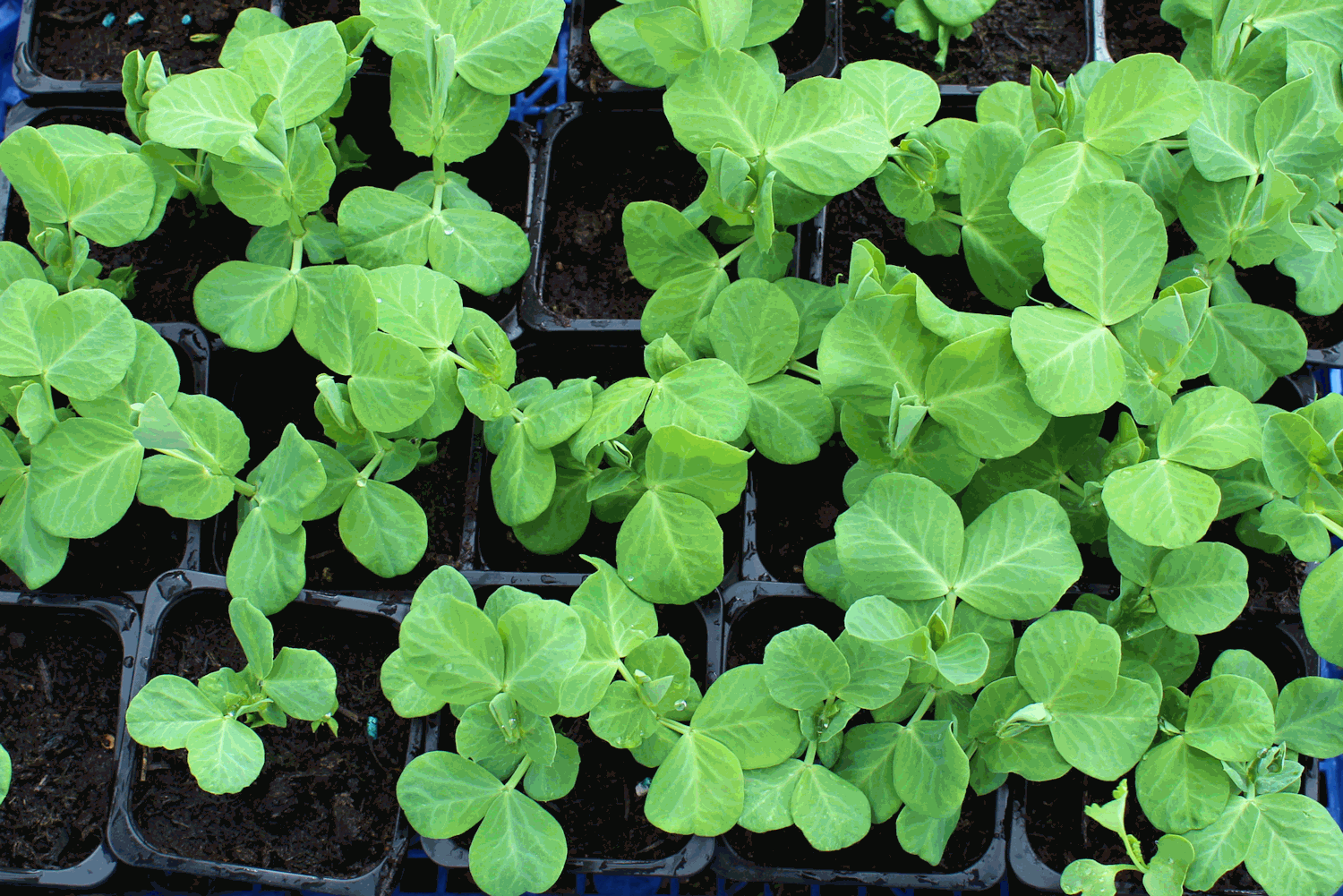
How to grow peas, sugar snap peas and mange tout
Peas, sugar snap peas and mange tout are all varieties of the same vegetable. They have been developed to be eaten at different stages of maturity. Sugar snaps and mange tout have tender, edible shells and should be eaten before the peas fully form. The method of growing them is the same whichever type you choose.
There are a wide range of varieties available that will allow sowing from late January right through to July for harvesting from June until October. Some varieties can be sown in the autumn for early crops.
Sow peas, sugar snap peas and mange tout
Sow early varieties from January. These are best sown in small pots or modules in an unheated greenhouse or polytunnel. This will give improved results as the peas are less likely to rot before they germinate. It will also give you a better chance of protecting the seeds from mice. Sow one or two peas per pot about 3cm deep. Water generously when sown and keep moist but do not over-water as this is likely to cause the seeds to rot.
Sow successionally for a continuous harvest through the summer and early autumn, but bear in mind that you may need different varieties.
Sow direct in the allotment or vegetable patch from March until July. Traditionally, peas are sown in shallow trenches but this is unnecessary, a 3cm deep drill is fine, as is a hole made with a dibber or your finger! The ideal spacing is about 4cm, but birds, mice, other pests or just failed germination will create spaces in your rows so I sow more generously at 2cm and thin out if necessary. Add some general purpose fertiliser or chicken manure pellets to the surface according the the packet instructions if your soil hasn’t been mulched or manured within the last year or so.
Start early varieties of peas in pots
Start peas in pots for good germination and to protect against mice, birds and other pests
Water regularly once the plants are growing and continue to sow successionally for a long harvesting period.
Plant out and grow peas, sugar snap peas and mange tout.
Start planting your peas out from March. Spacing them about 4cm between plants and 20cm between rows. Peas are natural climbers and they will need some kind of support to climb on. Peas sticks are ideal, but wire structures can be used too. I have some old pieces of trellis with chicken wire attached that work well. Check the seed pack for height required as different varieties grow differently, usually ranging between one and two metres.
Water generously about once a week if the weather is dry. A liquid feed can be used when the pods begin to form but in healthy soil this is not essential.
Harvest peas, sugar snap peas and mange tout.
Harvest peas when the pods feel full, sugar snaps as the pods begin to fill out and mange tout as soon as the pods have formed. Harvesting usually begins in June and can continue until October with successional sowing and planting.
Peas freeze very well.
Pea problems
One of the difficulties with peas is that mice and birds love the seeds. Netting can be used to protect from birds but mice are difficult to deter. If starting in pots place your trays somewhere that mice can’t easily reach.
Pea moths lay their eggs on the underside of leaves and the hatching maggots invade the pods causing damage to the crop. Use fleece or mesh to protect the plant. Crop rotation also helps as the caterpillars spend the winter in the soil.


